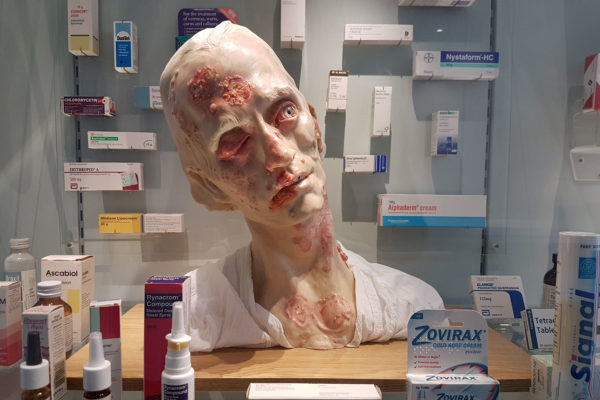A museum filled with medicines can be found just around the corner from the Tower of London, presumably to offer salves to those who had just lost their heads.
As it happens, the museum building is modern, although the collection itself was started in 1842, and ranges from the early days when medications were made in-house by individual pharmacies to the modern day mass production techniques.
It’s however an odd display.
This is probably because even people only mildly interested in history will have some degree of familiarity with what an “old thing” should look like. Yet, medications are something we — hopefully — have limited exposure to, so medications are terra incognita to most of us.
In that sense it’s a strange world for most people, ranging from old Victorian snake oils to modern sanitized packaging, this is a museum of boxes and labels. Not unlike the Museum of Brands, but clinical.
It’s also unsettling, as while most of us probably know at some level that most medications are essentially, types of poison, that aim to kill off an infection, it’s still unsettling to see bottles of poison in a medical cabinet. Arsenic and Cyanide are not safe names to leave lying around.
There’s probably something here to interest most people, although I was particularly taken by reading the grandiose claims on the Victorian medications, which I’ve long found morbidly fascinating.
Fortunately, over time, the craft of pharmacology turned into a regulated trade, and packaging now contains more warnings about side effects than they do about the hoped for medical improvements the pills are supposed to deliver.
Even if often the side effects being warned about are exactly what the medications are trying to treat. A treatment for insomnia that can cause insomnia.
There is a large pack of leaflets next to the glass cases to explain what each item is, although I personally ended up finding it a bit unwieldy and ended up putting it away and simply soaking up the visual feast.
One case though might leave you with nightmares – with a scarily lifelike model of the facial effects of diseases, and looking like something out of a horror movie.
Sweet dreams.
The Royal Pharmaceutical Society Museum is open Mon-Fri (9am-5pm), closed Bank Holidays. Entry is free, just sign in at the receptionist desk.
Address:
Royal Pharmaceutical Society Museum,
66 East Smithfield,
London,
E1W 1AW












Superb. My pharma background made it even more fascinating. Highly recommended. Will be back for another dose.